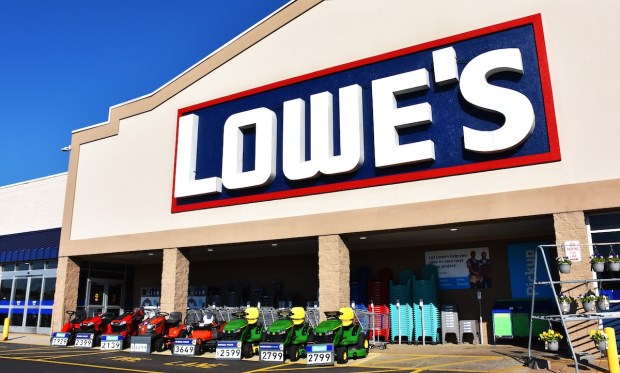
The home improvement sector is getting its affairs in order while eyeing a macro improvement.
That’s the news from home improvement retailer Lowe’s, which cited softer demand and ongoing headwinds — including a slowdown in home sales, higher interest rates and a pullback in consumer spending — during a first-quarter 2024 earnings call Tuesday (May 21).
Still, the company beat Wall Street’s expectations for the quarter and stressed to investors that it was making investments into digital and omnichannel opportunities “to prepare for when the macro environment shifts back to the positive.”
“We are pleased with our start to spring, driven by strong execution and enhanced customer service,” said Lowe’s Chairman, President and CEO Marvin R. Ellison during the call. “We continue to gain momentum with our Total Home Strategy, reflected in our growth in Pro and online.”
The company’s total sales for the quarter were $21.4 billion, compared to $22.3 billion in the prior-year quarter. Comparable sales for the quarter decreased 4.1% as the decline in DIY big-ticket discretionary spending was partially offset by positive comparable sales in Pro and online.
“Our strategic investments to improve the pro experience are driving sales and engagement,” Ellison said on the call. “…Pro growth continues to run strong for us.”
Read also: Lowe’s Projects Falling Sales as Consumers Put off Remodeling
Lowe’s comments about its earnings results Tuesday were similar to that of its competitor Home Depot’s May 14. Both retailers emphasized their commitment to growing their share of the professional contractor and builder segment.
Compared to Home Depot, which counts on the pro segment for around half of its sales, only 20% to 25% of Lowe’s sales come from painters, contractors and other home professionals.
As do-it-yourself (DIY) customers are pulling back on both spending and projects, the pro segment represents a much steadier business for home improvement retailers.
Lowe’s executives told investors during Tuesday’s call that the company is “focused on strengthening our relationships with this core [pro] customer, who has proved to be resilient, by building trust and reliability with them.”
The home improvement retailer’s pro strategy remains “focused on taking share with small- and medium-sized pros,” a cohort that represents half of the $500 billion pro market, which Lowe’s executives told investors remains highly fragmented.
“There is still significant runway ahead to grow our sales with these customers,” Ellison said on the call.
See also: DoorDash Enters Home Improvement Category With Lowe’s Partnership
As part of its pro-focused strategy, Lowe’s earlier this year successfully wooed Klein Tools to its shelves, ending a 14-year exclusivity deal that Home Depot had with the professional electrical tool brand.
“Klein Tools allow us to rebuild credibility with pro customers,” Ellison said during the call.
The construction industry relies heavily on commercial distribution, with about 85% of construction products being sold through this channel and the remaining 15% coming from retail sales, like Lowe’s. That’s why the company is trying to penetrate further into the pro space and win a greater slice of the remaining 85% pie.
As of May 3, Lowe’s operated 1,746 stores representing 194.9 million square feet of retail selling space.
Lowe’s also reinforced its forecast for the full year during the call, saying it expects comparable sales to be down 2% to 3% and total sales to be between $84 billion and $85 billion.
PYMNTS Intelligence’s “Money Mobility Tracker®” found that in the U.S., contractors wait for payment an average of 74 days for a given job. This lack of timely payment means that 73% of contractors had to pay out of pocket for materials in 2023, up from the 66% in 2022 that reported the same.
For all PYMNTS B2B coverage, subscribe to the daily B2B Newsletter.